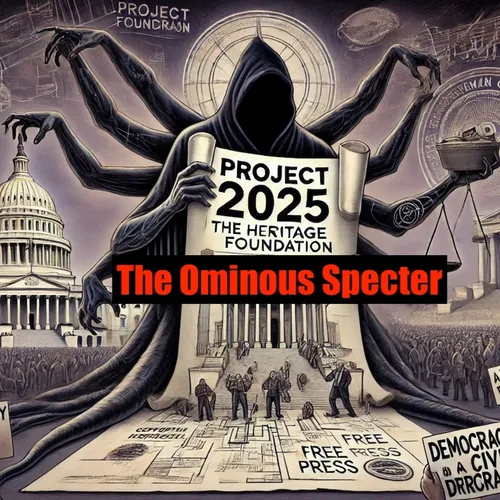Radical Republican Agenda Aims to Dismantle Federal Government
- Author
- Quiet.Please
- Published
- Thu 04 Sep 2025
- Episode Link
- https://www.spreaker.com/episode/radical-republican-agenda-aims-to-dismantle-federal-government--67637498
Project 2025 is not just another policy blueprint; it is a sweeping, meticulously detailed playbook designed to overhaul how the federal government operates, reshape the civil service, and realign American governance along sharply conservative lines. Crafted by the Heritage Foundation with contributions from over 100 coalition partners and released in April 2023, the 927-page document, titled “Mandate for Leadership: The Conservative Promise,” outlines concrete steps a newly elected Republican president could take starting from day one in office.
Proponents of Project 2025 describe it as a plan to “destroy the Administrative State,” targeting what they argue is an unaccountable bureaucracy captured by liberal interests. Kevin Roberts of the Heritage Foundation put it bluntly: “All federal employees should answer to the president.” The vision centralizes control of the entire executive branch, grounding itself in an expansive interpretation of the unitary executive theory. According to the project’s documentation, independence for agencies such as the Department of Justice, the Federal Communications Commission, and others would be eliminated. Leadership at these institutions would be swept clean and staffed by presidential loyalists, many of whom could be installed in “acting” roles that bypass Senate confirmation.
A key mechanism enabling this transformation is Schedule F, a controversial classification devised to move large numbers of nonpartisan civil servants into at-will positions. Without traditional civil service protections, these employees could be easily removed and replaced with political appointees. Heritage Foundation writers stress that this is essential to secure rapid, loyal implementation of the president’s agenda. Critics, however, warn that the move exposes federal government positions to unchecked political influence and undermines the longstanding principle of impartial public service.
Listeners may recognize some of these ambitions from earlier efforts under President Trump. This time, Project 2025 comes armed with a detailed 180-day playbook and ready-to-sign executive orders designed to implement change with unprecedented speed. As reported by Government Executive, the plan’s first phase has already resulted in the abrupt dissolution of agencies such as the Consumer Financial Protection Board and USAID, accompanied by mass firings spanning across more than two dozen agencies. Challengers, including federal employee unions like the NTEU, have launched lawsuits, arguing these actions violate long-standing legal protections for government workers.
Project 2025 reaches well beyond administrative restructuring. In criminal justice, for example, the document spells out proposals directing the Department of Justice to directly intervene in cases where local prosecutors are viewed as too lenient—potentially removing them from office. The Brennan Center points out that such measures could limit prosecutorial discretion and pressure local officials to abandon reform agendas, particularly in drug or low-level offenses.
In the education sphere, the blueprint calls for significant expansion of voucher programs, the empowerment of charter schools, and even the closure of public schools deemed noncompliant with conservative values. Curriculum “censorship” is highlighted as a tool to ensure ideological conformity, and efforts to diminish the role of public education are explicitly connected to broader goals of limiting federal influence at the state and local levels.
Reproductive rights are a prominent battleground as well. The project supports creating a national registry to track abortions and calls for nationwide restrictions that leverage statutes like the Comstock Act and reverse FDA approvals of abortion medication.
Expert commentary ranges widely on the likely impacts of these reforms. Advocates assert Project 2025 will bring...
